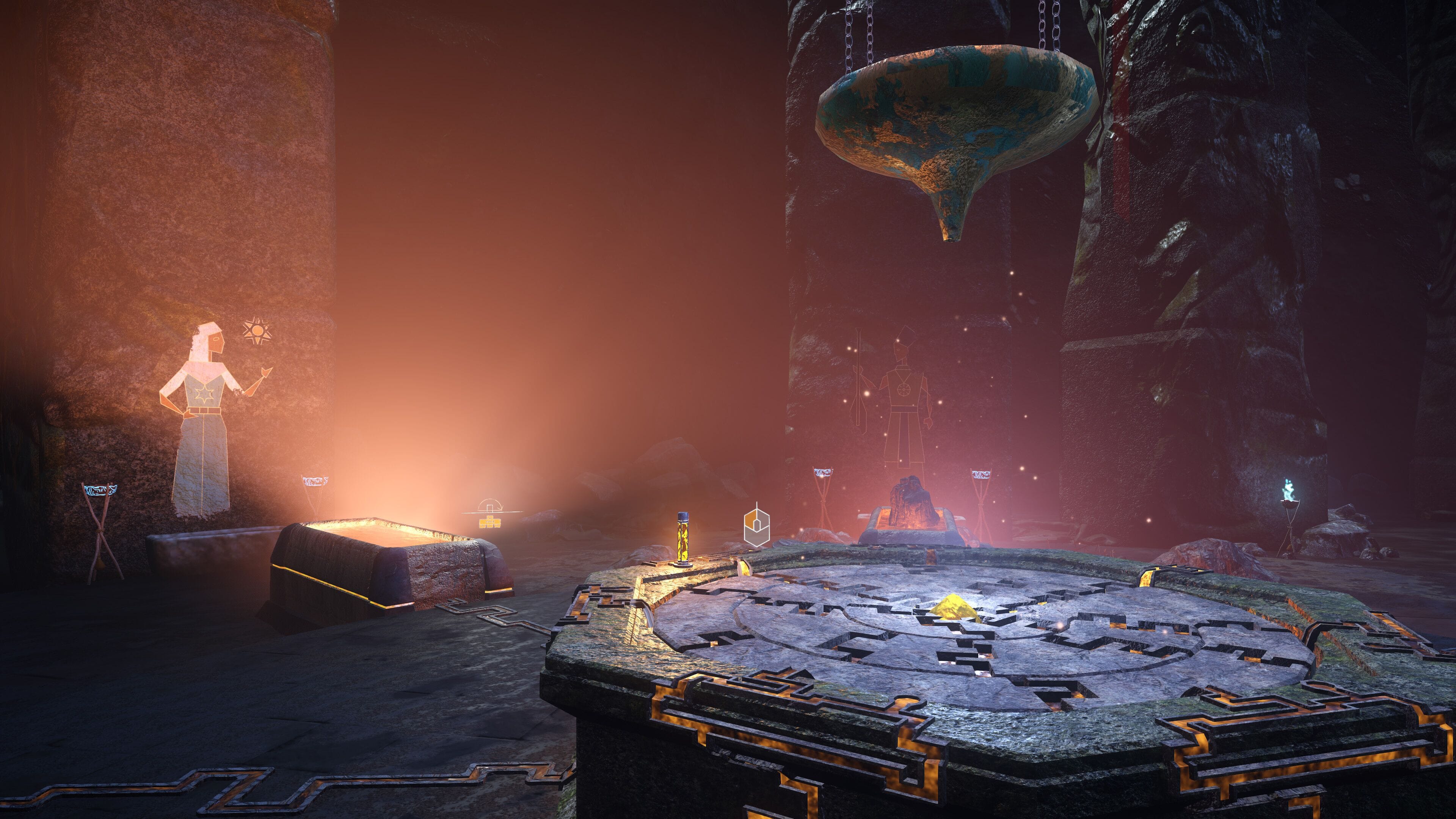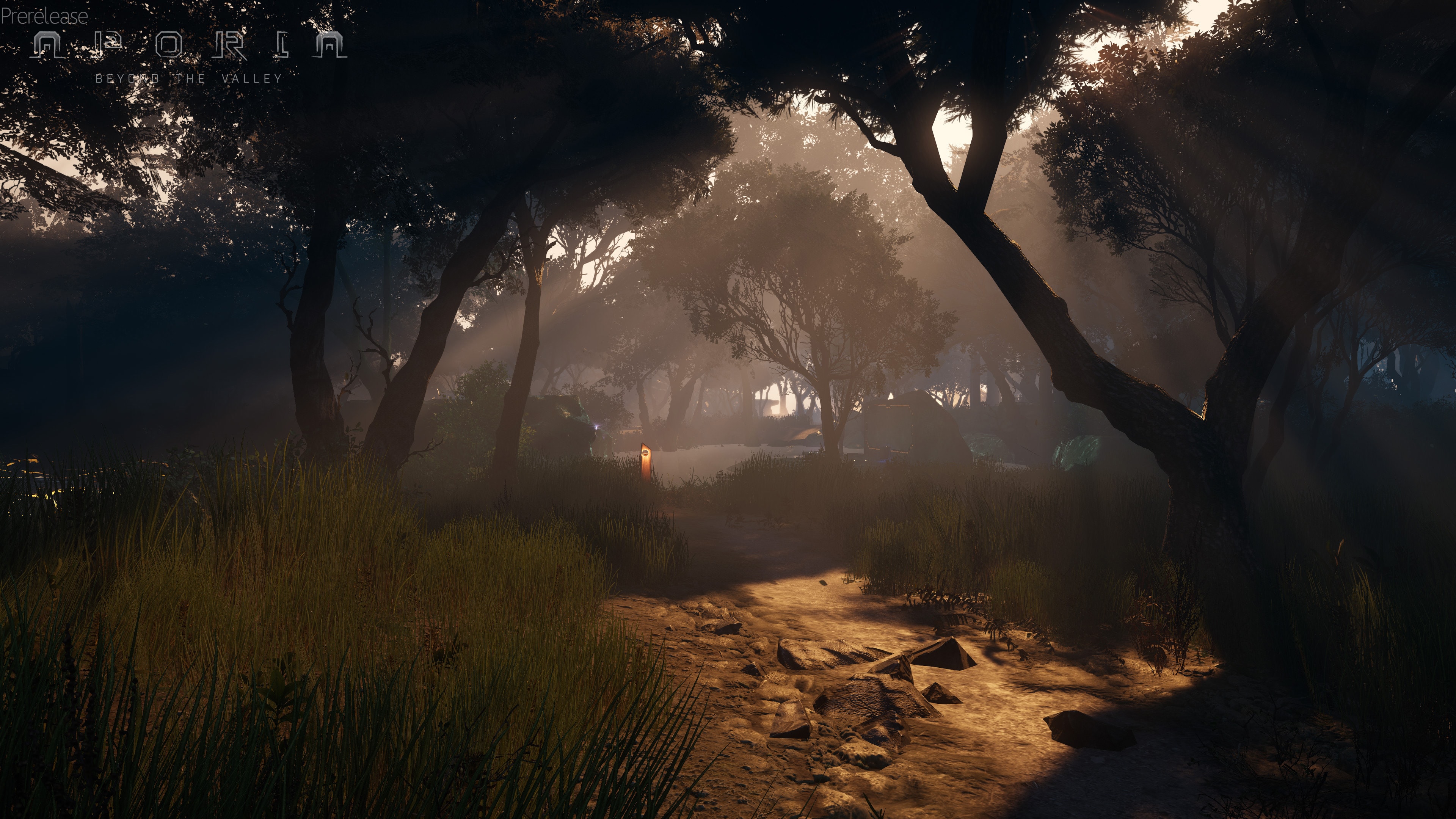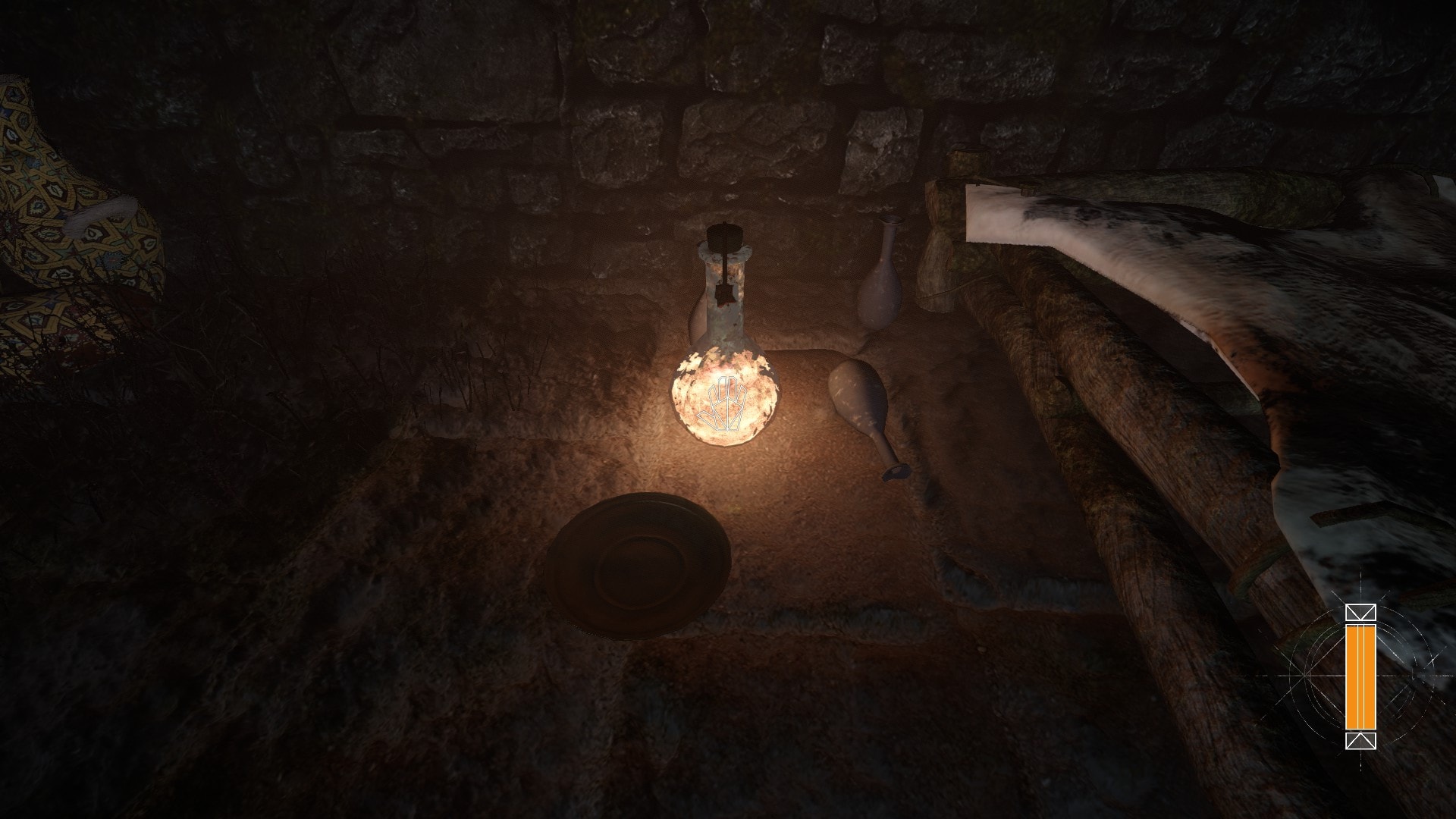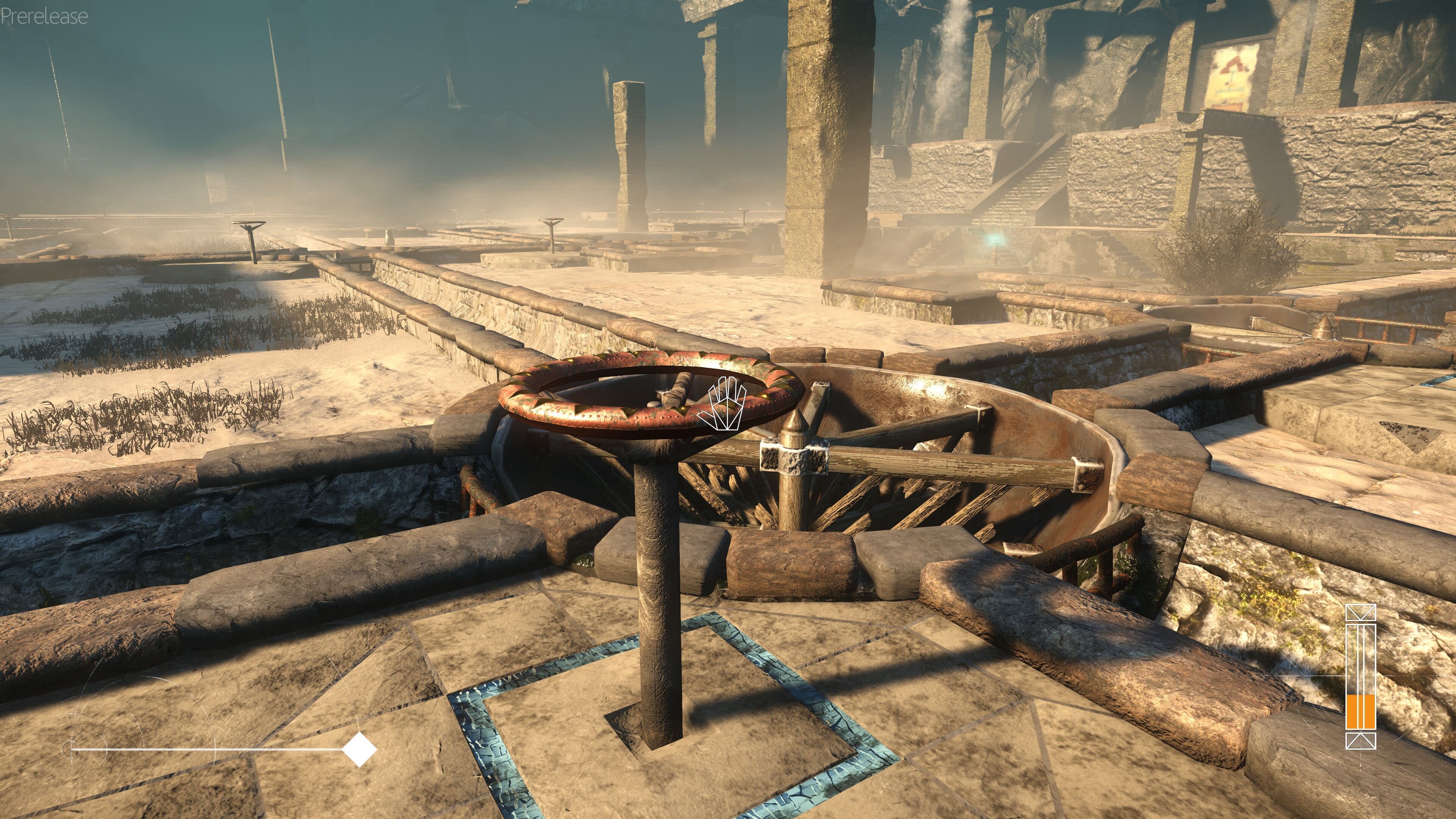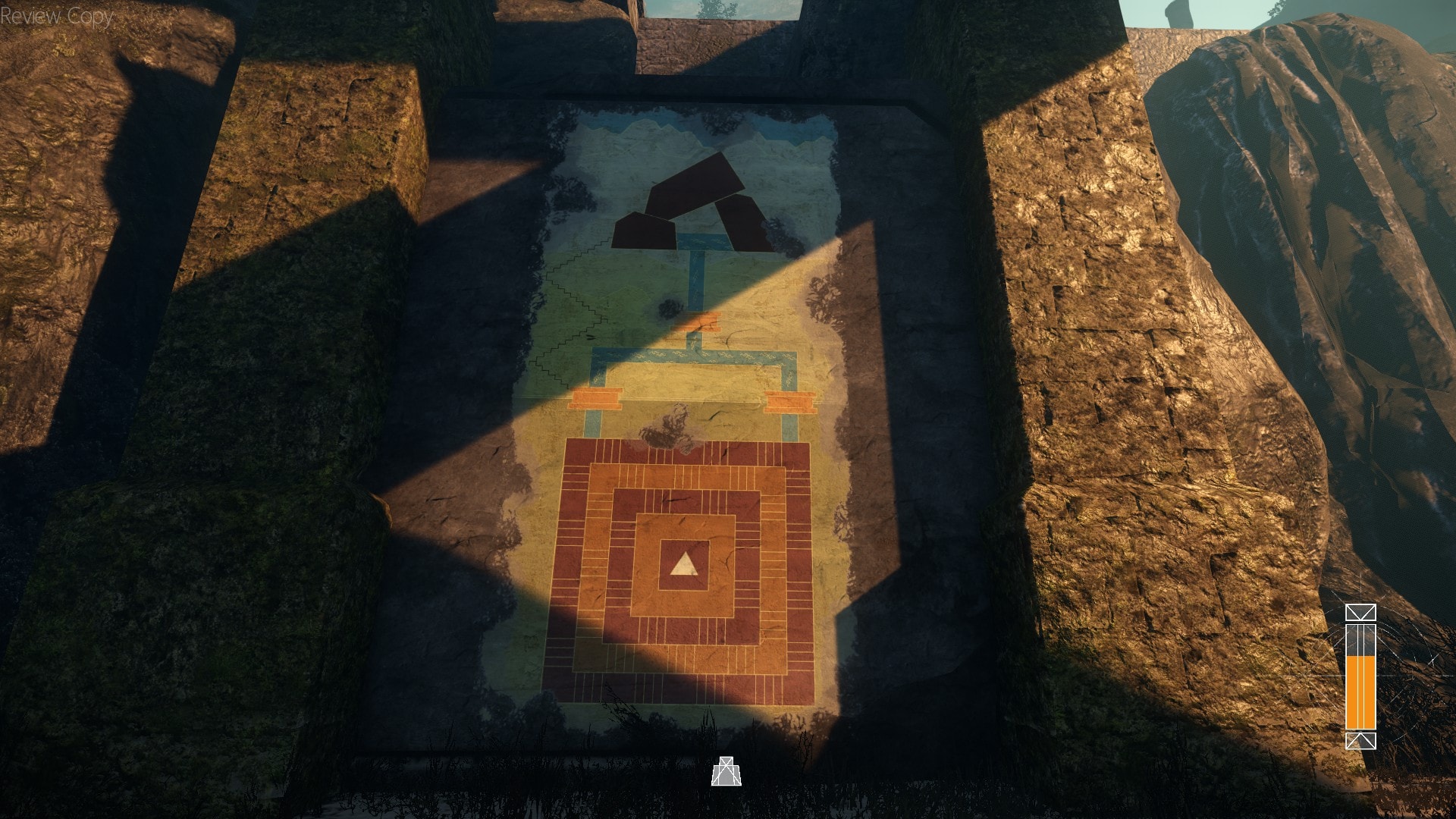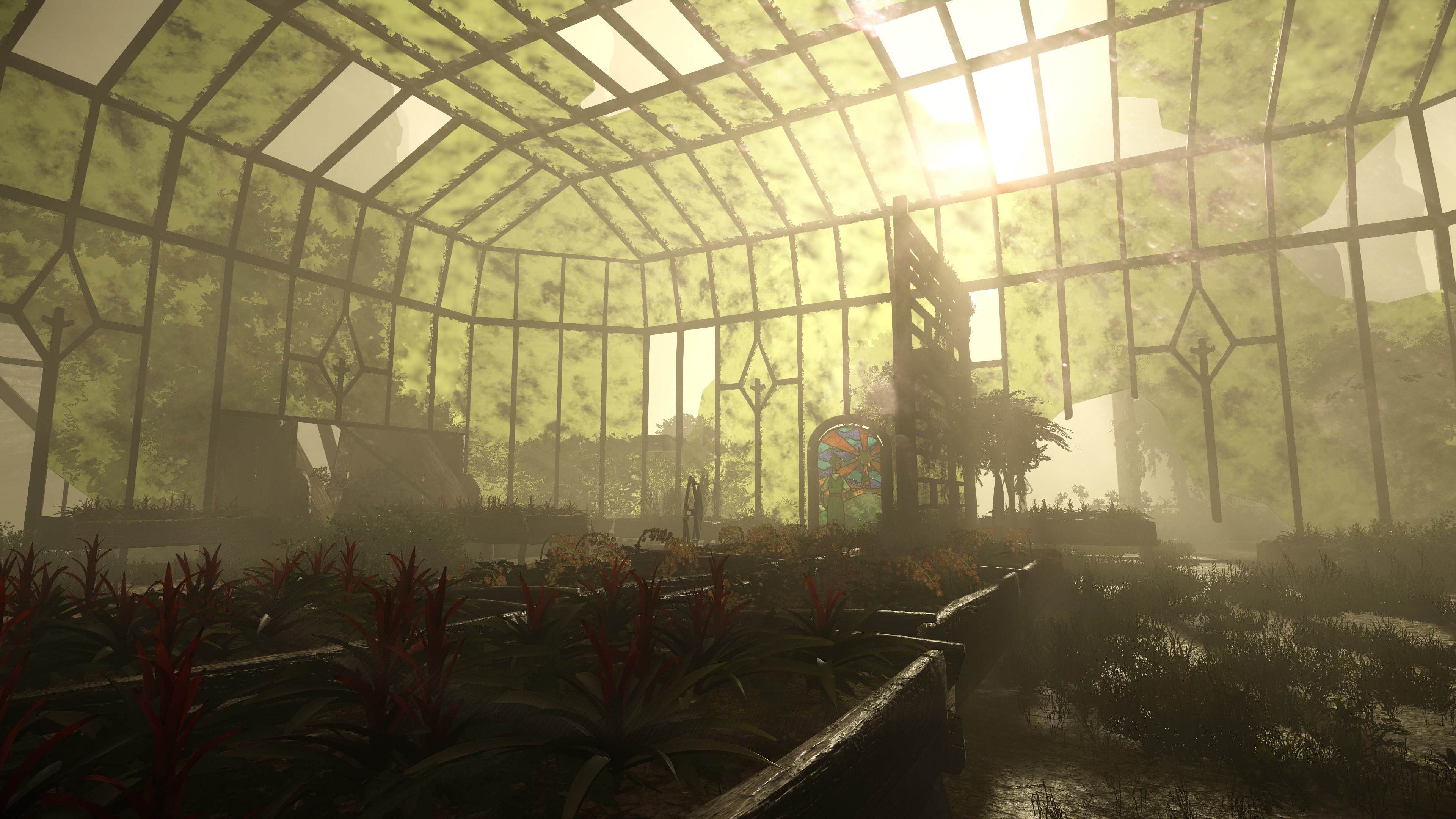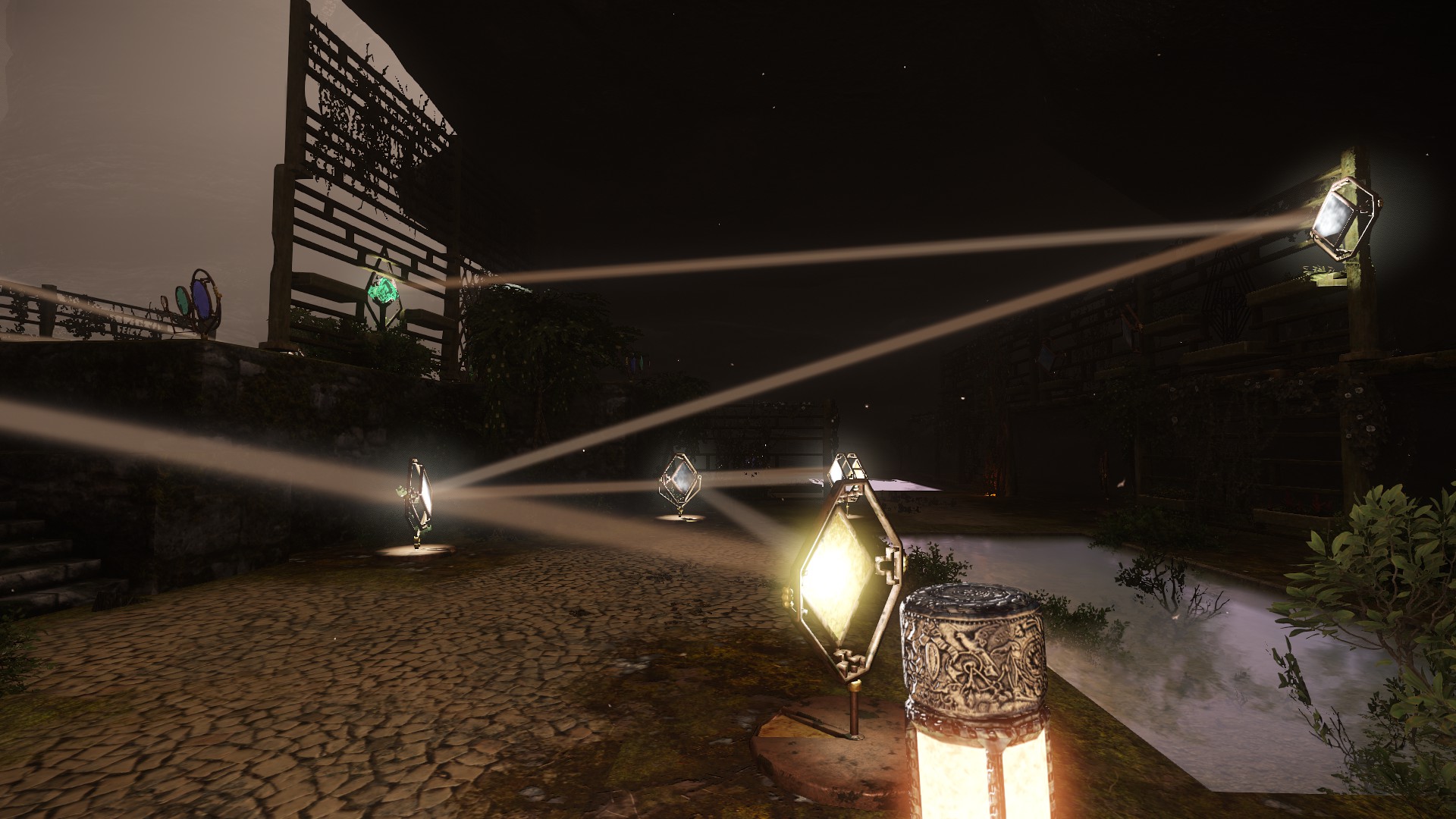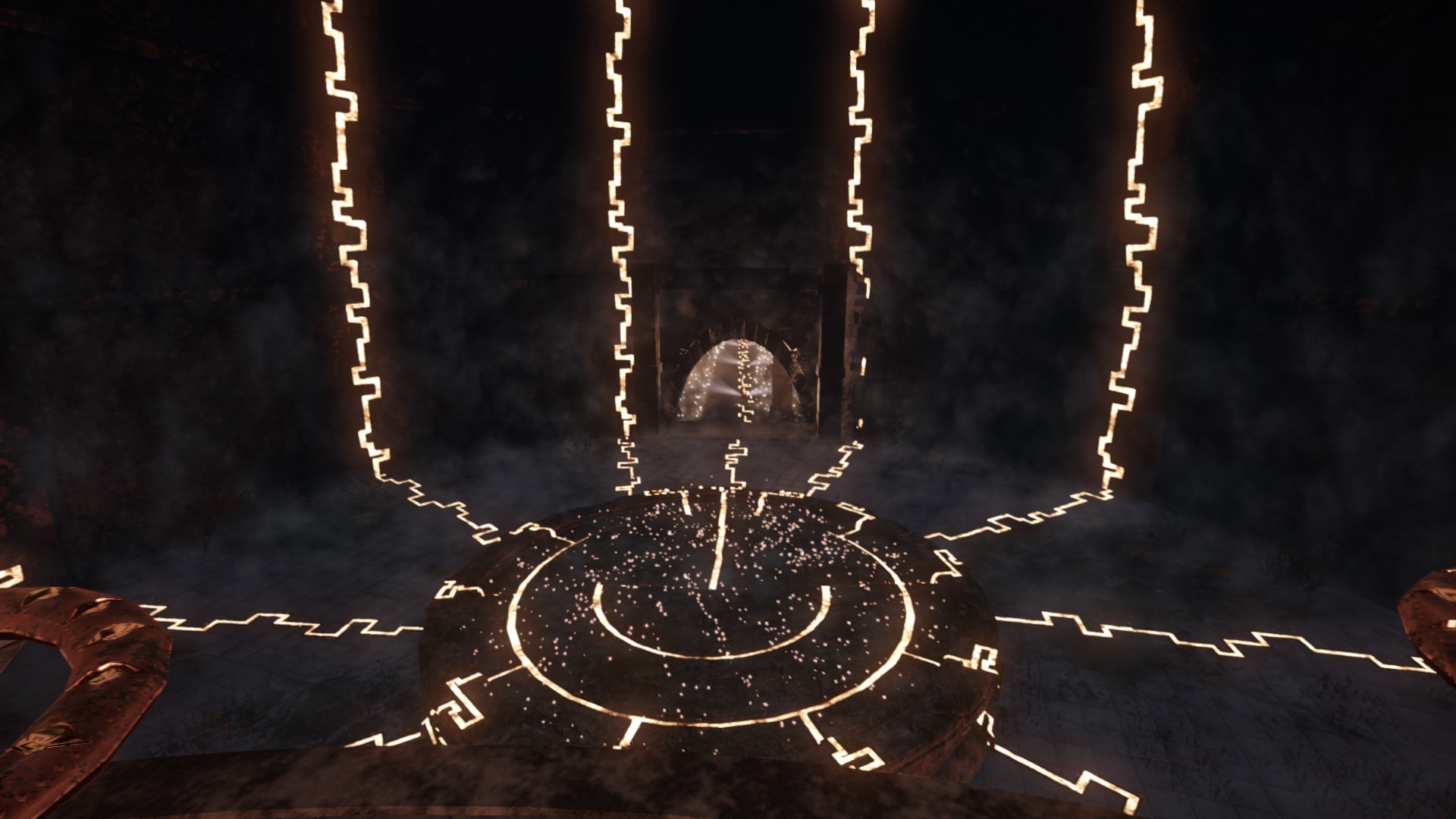You begin this immersive experience ensconced in what seems like a stone basin brimming with water, evoking sensations of both rebirth and finality. Could this be a tomb? Upon orientation, a curious mural catches your eye, revealing that the protagonist is a woman. The environment engulfs you in an aura of days gone by—think the medieval era but with an ethereal touch.
You’re immediately greeted with lush landscapes reminiscent of Eden itself. Verdant gardens stretch out, punctuated by majestic trees, age-old stone edifices, and waterfalls so lifelike you can almost feel the mist on your skin. Time flows seamlessly here, transitioning from day to dusk. The brilliance of the sunset isn’t merely a fleeting visual; it’s a heartfelt experience. The rhythm of the rain, as it pelts down, adds to the serenity, with every droplet rendered with painstaking realism.
Yet, this paradise has its shadows. The stillness is occasionally broken by unsettling sights of skeletons strewn around—some seated, as if frozen mid-conversation. The unsettling juxtaposition of beauty and mortality makes one wonder: What catastrophe struck this utopia?
Navigation and Interface
The game’s interface is thoughtfully designed, maintaining simplicity yet exuding mystique. Launching into a new game, resuming an ongoing one, or diving into one of the six available save slots is straightforward. Notably, the title font bears a unique design, aptly encapsulating the game’s enigmatic vibe.
A trifecta of options awaits the player:
- Control settings for tailoring character movements and refining mouse sensitivity,
- Graphics settings to optimize visuals based on your machine’s capabilities, and
- Audio controls for the ideal acoustic ambiance.
Scrolling down, players will find an interactive credits section, and a unique health status display that involves choosing pictorial fragments to access various gates. The game’s playful physics, showcased by the character’s exaggerated jump height, adds a touch of whimsy. Speed enthusiasts will appreciate the sprint function, made even more delightful by the absence of stamina constraints.
Dive into the Gameplay
Aporia’s narrative transcends language barriers—words are sparse, but emotions run deep. The story unfolds organically, relayed through images and tableau rather than text. Players must piece together these fragments to unravel the game’s secrets.
The core mechanics revolve around magical elixirs housed in quaint flasks. These potions, once collected, serve multiple purposes: from nurturing healing flora to manipulating vines for climbing or unlocking pathways to new realms. A highlight is the dazzling effect when pouring this mystical liquid onto specific stones, paving the way forward. The versatile flask also doubles as a luminary in the darker parts of your journey.
Gates in Aporia possess their own lore. Some require fragmented shapes (similar to necklaces worn by in-game characters) to be pieced together, forming a cohesive image, while others demand logic-based puzzles to be solved. Whether it’s combining symbolic illustrations of the sun, human life cycles, or vegetation growth, players will need to engage both intuition and intellect.
Water puzzles are a standout feature. One particularly intense segment sees the player inadvertently plunging into an abyss after a bridge collapse, culminating in a thrilling escape powered by a torrential waterfall. This sets the stage for a subsequent water-themed conundrum, wherein players manipulate valves to guide water flow—a challenge both vexing and rewarding.
The tranquility is punctuated with heart-pounding moments. The sudden appearance of the enigmatic Demon shatters the illusion of safety, instilling a perpetual sense of dread. This palpable tension is further amplified during boat rides where the Demon lurks just out of reach, and torch-lit sequences where evading the Demon’s grasp becomes a nerve-wracking challenge.
Mirror puzzles, though starting off elementary, escalate in complexity, demanding utmost concentration and patience. Navigating through dimly-lit tunnels, players will encounter cryptic coffins, providing tantalizing glimpses into the narrative’s deeper layers.
The Climax: Two Roads Diverged
The climax unfolds in an ethereal white chamber, where the Demon unveils further segments of the story, guiding players through a maze of floating narrative art. Just when the end seems nigh, Aporia throws a curveball. Players are thrust into a monochromatic realm, ultimately emerging with the final necklace fragment, unlocking the temple’s grand gateway.
Two divergent endings await:
- Savior: To the left, where players can breathe life back into the realm.
- Escapist: To the right, leading to a self-centric escape.
In summation, “Aporia: Beyond The Valley” is a breathtaking odyssey.
Awarding it a 9.5/10, the only qualms lie with the occasionally vexing Demon and certain mirror puzzles. Yet, once the credits roll, the allure to relive its enchanting realms is irresistible.
